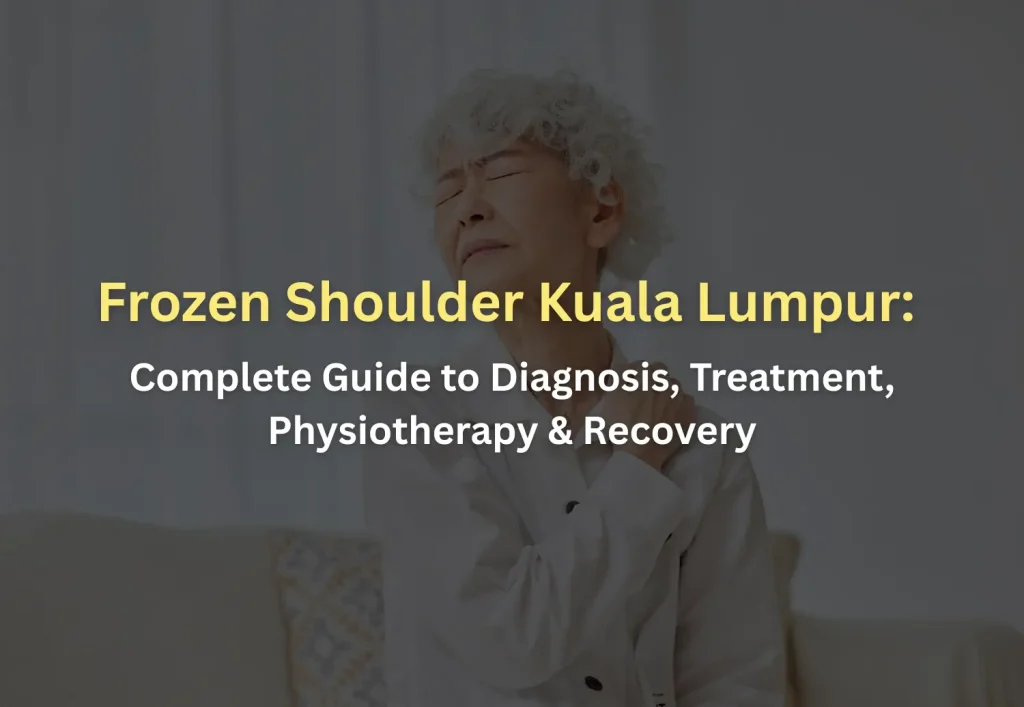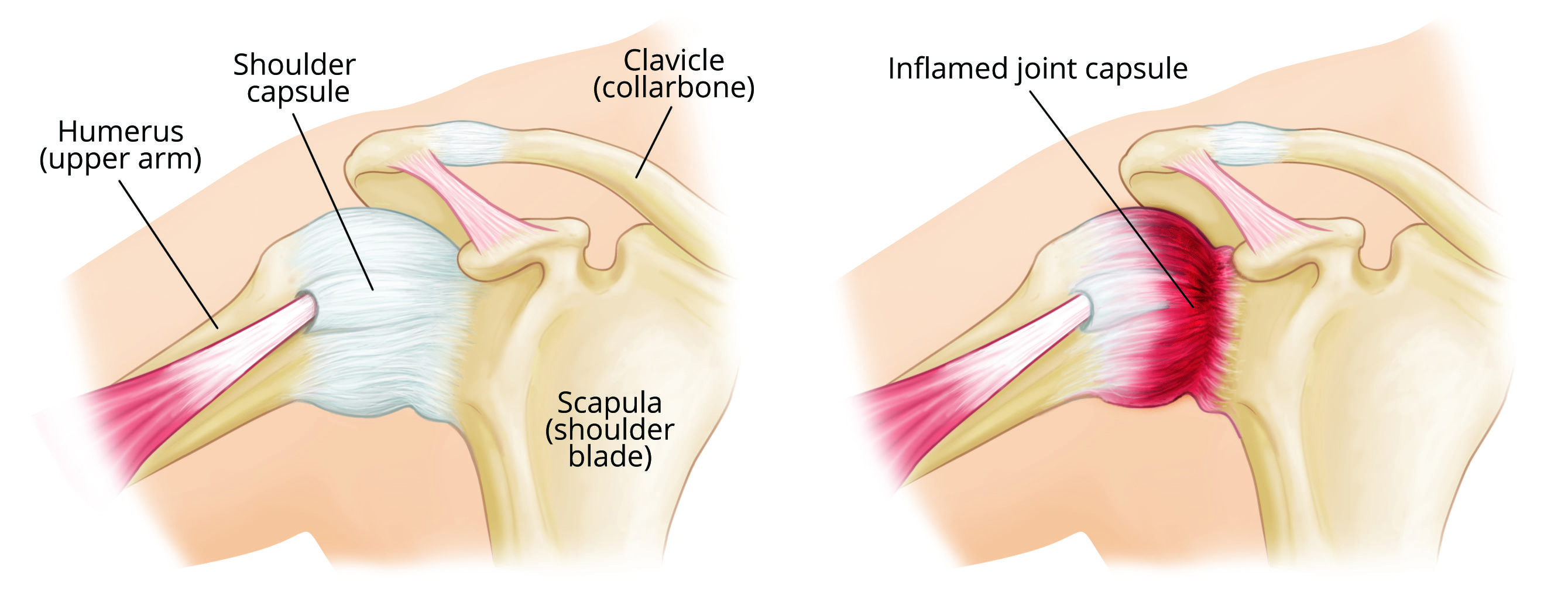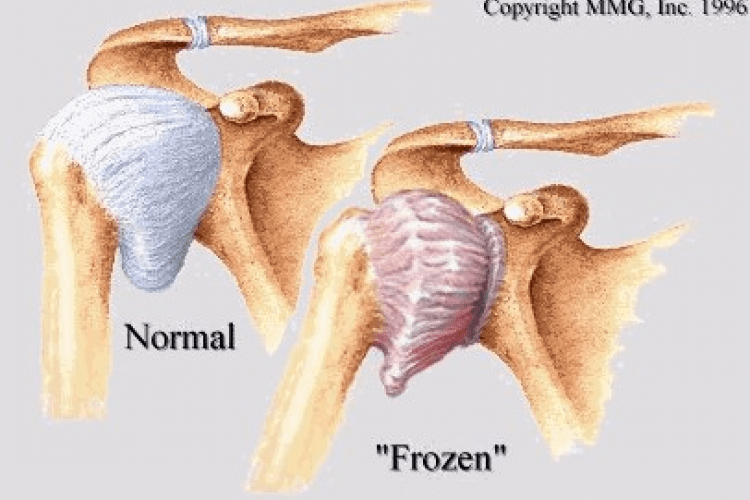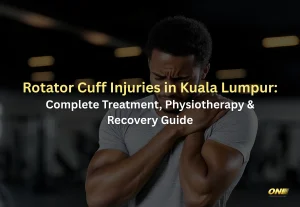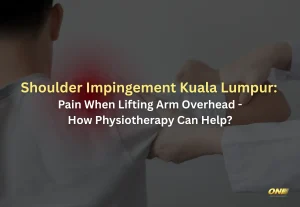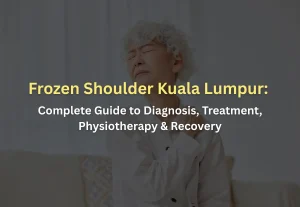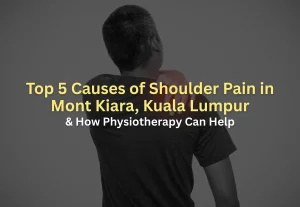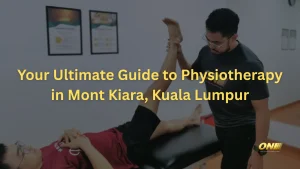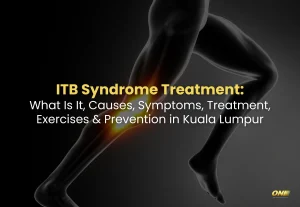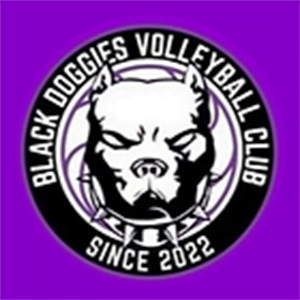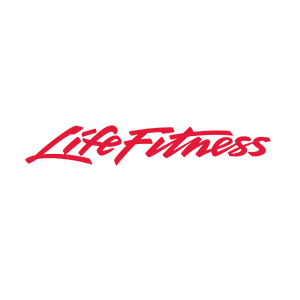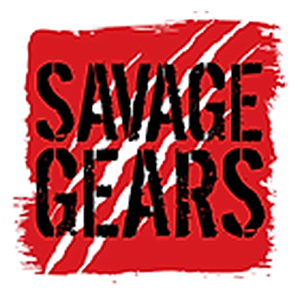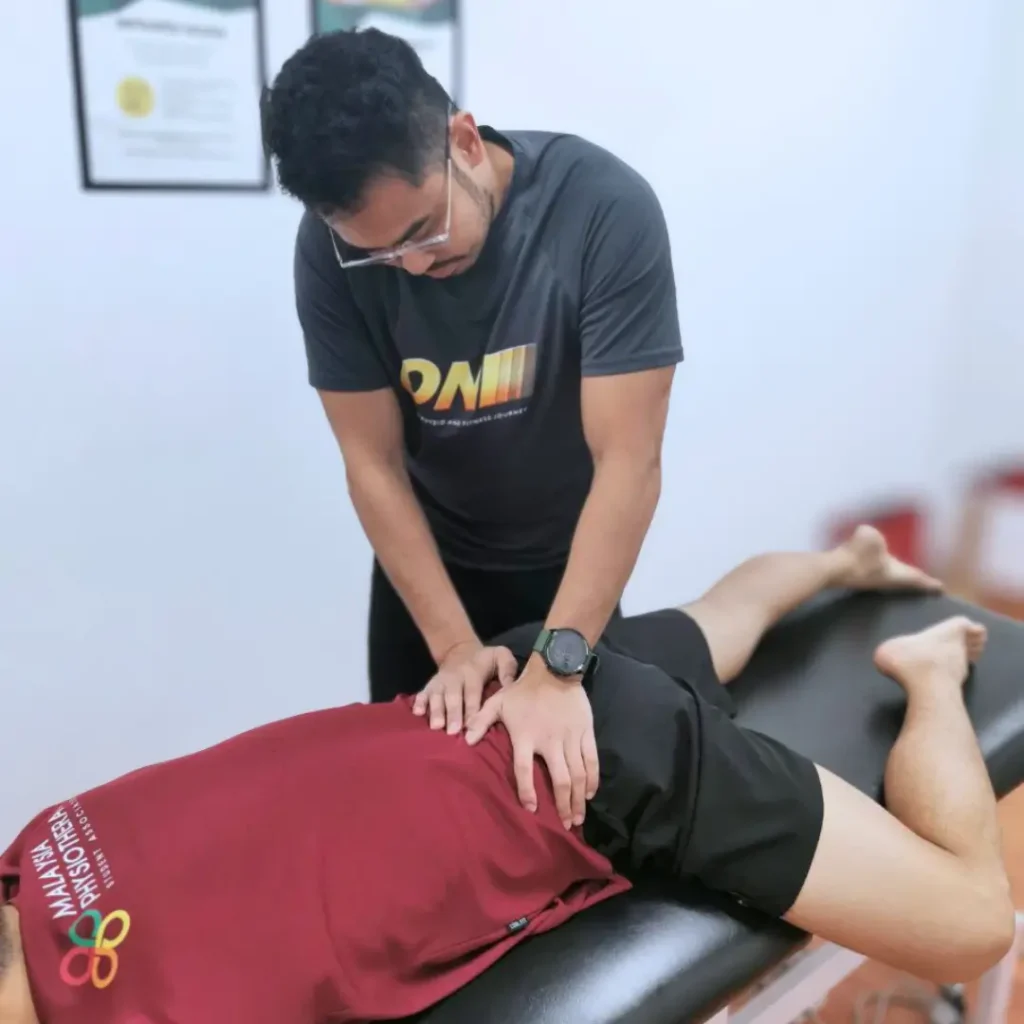Table of Contents
You wake up one morning and can’t lift your arm. Maybe you’ve been ignoring that nagging shoulder pain for weeks, and now you can’t even reach for your seatbelt or put on a shirt without wincing.
If this sounds familiar, you’re not alone. Frozen shoulder affects thousands of people in Kuala Lumpur every year, especially working professionals who spend long hours at their desks. The good news? With the right treatment and guidance, you can get your life back.
In this guide, we’ll walk you through everything you need to know about frozen shoulder, from understanding what’s happening in your shoulder to finding the right treatment path. At ONI Physio Fitness, we’ve helped countless patients in Mont Kiara and across KL recover from frozen shoulder, and we’re here to support you too.
What is Frozen Shoulder (Adhesive Capsulitis)?
Frozen shoulder, or adhesive capsulitis, happens when the capsule around your shoulder joint becomes thick and tight. Think of it like shrink wrap slowly tightening around your shoulder. This makes it incredibly difficult and painful to move your arm.
It’s not just a medical condition. It affects everything you do. Simple tasks become challenging:
- Reaching for items on high shelves at the grocery store
- Driving (especially that awkward reach for the parking ticket)
- Getting dressed in the morning
- Sleeping on your side
- Working at your computer with proper posture
Studies show that frozen shoulder affects about 2-5% of the general population, but the numbers are higher among office workers in urban areas like Kuala Lumpur. Long hours sitting, poor posture, and high stress levels all play a role.
If you’re a professional working in Mont Kiara or anywhere in KL, your risk goes up even more. The combination of desk work, air conditioning (yes, it matters!), and limited movement throughout the day creates the perfect storm for shoulder problems.
Is It Frozen Shoulder or Just a Stiff Shoulder?
The exact cause of frozen shoulder is not always known, but it typically develops due to inflammation and scarring of the joint capsule. Several risk factors are known to contribute to its onset:
Differentiating Diagnosis
Here’s what confuses most people: not every stiff shoulder is a frozen shoulder. Understanding the difference helps you get the right treatment faster.
Regular shoulder stiffness usually:
- Gets better with rest or basic stretching
- Doesn’t wake you up at night
- Improves with heat or a good massage
- Still allows you decent range of movement
Frozen shoulder is different. It:
- Gets progressively worse over weeks or months
- Causes severe night pain that disrupts your sleep
- Restricts your movement in all directions (you literally can’t lift your arm)
- Doesn’t improve with rest alone
Here’s a simple self-check: Try to raise your arm straight up toward the ceiling. Now try to reach behind your back like you’re tucking in your shirt. If both movements are extremely limited and painful, especially if this has been getting worse over time, you might be dealing with frozen shoulder.
But please don’t self-diagnose. A proper assessment from a physiotherapist can save you months of frustration.
Frozen Shoulder Symptoms
The symptoms of frozen shoulder are pretty distinctive. Most patients describe it the same way:
Pain that:
- Starts gradually, often without any injury
- Gets worse at night (many patients say this is the worst part)
- Makes it nearly impossible to sleep on the affected side
- Radiates from your shoulder down to your upper arm
Stiffness that:
- Limits how high you can lift your arm
- Makes it hard to reach behind your back
- Prevents you from doing simple tasks like washing your hair
- Affects both active movement (you moving it) and passive movement (someone else moving it for you)
Frozen Shoulder Diagnosis

Getting the right diagnosis is the first step to recovery. Here’s what happens during a proper frozen shoulder assessment.
Physical Examination:
Your physiotherapist will check your range of motion in different directions. We’re looking at how far you can move your arm yourself, and also how far it moves when we gently guide it. With frozen shoulder, both are limited.
Movement Tests:
We test specific movements:
- Forward flexion (lifting arm straight ahead)
- Abduction (lifting arm to the side)
- Internal and external rotation (rotating your arm)
- Reaching behind your back
Additional Assessment:
Sometimes we need imaging like X-rays or MRI scans, but not always. These help rule out other problems like rotator cuff tears or arthritis. Most times, the physical exam tells us everything we need to know.
At ONI Physio Fitness, we take time during your first visit to really understand your shoulder. We ask about your daily activities, your work setup, and how the pain affects your life. This helps us create a treatment plan that fits your actual needs, not just a generic protocol.
Causes of Frozen Shoulder
Understanding why frozen shoulder happens can help you prevent it from coming back (or affecting your other shoulder).
The truth is, we don’t always know exactly why it starts. But certain factors make it more likely.
Common triggers include:
- Previous shoulder injury or surgery
- Prolonged immobilization (like wearing a sling or avoiding movement due to pain)
- Inflammatory conditions affecting the shoulder
- Reduced blood flow to the shoulder capsule
Risk Factors for Kuala Lumpur Office Workers

If you work in an office in KL or Mont Kiara, pay attention to these specific risk factors:
Desk work and posture: Sitting for 8-10 hours a day with your shoulders rolled forward puts constant stress on your shoulder joints. That hunched position over your laptop? It’s slowly changing how your shoulder moves.
Diabetes and metabolic conditions: People with diabetes are 5 times more likely to develop frozen shoulder. If you have blood sugar issues, managing them well helps protect your shoulders too.
Age and gender: Frozen shoulder typically affects people between 40 and 60 years old. Women are slightly more likely to get it than men.
Thyroid disorders: Both overactive and underactive thyroid conditions increase your risk.
Sedentary lifestyle: When you don’t move your shoulders through their full range regularly, the capsule can start to tighten. In KL’s car-dependent culture, we often move even less than we realize.
Previous injuries: Even old injuries you’ve forgotten about can set the stage for frozen shoulder years later.
The 3 Stages of Frozen Shoulder: Understanding Your Journey
Frozen shoulder doesn’t happen overnight. It progresses through three distinct stages. Knowing which stage you’re in helps you understand what to expect and how to treat it effectively.
Stage 1: Freezing Stage (0-9 months)
This is when things start going wrong. You notice pain first, then slowly your movement becomes limited.
What you’ll experience:
- Pain that gradually gets worse, especially at night
- Increasing difficulty with overhead activities
- Growing limitation in your range of motion
- That awful pain when you accidentally move your arm the wrong way
During this stage, the capsule around your shoulder is inflaming and thickening. Your body is responding to something (often we’re not sure what), and unfortunately, that response is causing the problem.
Many patients tell us they wish they’d come in during this stage. Early treatment can sometimes shorten the overall timeline.
Stage 2: Frozen Stage (4-12 months)
Here’s the strange part: your pain often improves during this stage, but your shoulder becomes incredibly stiff. Some patients actually prefer the freezing stage because at least they knew why they couldn’t move. In the frozen stage, it’s just stuck.
What you’ll experience:
- Less pain overall (though still some discomfort)
- Severely limited range of motion
- Difficulty with daily tasks that require any shoulder movement
- Frustration because you feel like you should be able to move, but you just can’t
This is the stage where getting dressed becomes a 20-minute ordeal. Putting on a jacket? Forget about it. The good news is that the capsule has stopped actively inflaming. The bad news is that it’s now contracted and tight.
Stage 3: Thawing Stage (12-24 months)
Finally, some good news. Your shoulder starts to “thaw.” Movement gradually returns.
What you’ll experience:
- Slow but steady improvement in range of motion
- Decreasing pain and discomfort
- Ability to return to activities you’ve been avoiding
- Hope that this nightmare is actually ending
This is the stage where physiotherapy and exercise therapy really shine. Your shoulder is ready to move again, and we need to guide that movement properly to ensure you get back to full function.
Some patients thaw quickly (3-6 months), others take longer. With proper treatment, we can help speed up this process and make sure you regain as much movement as possible.
Frozen Shoulder Stage-Specific Do's & Don'ts
Different stages need different approaches. Here’s a simple table you can refer to:
| Stage | Do's | Don'ts |
|---|---|---|
| Freezing (0-9 months) |
• Pendulum exercises • Gentle passive stretches • Pain-free range exercises • Postural awareness |
• Overhead pressing • Heavy lifting • Aggressive stretching • Sleeping on affected side |
| Frozen (4-12 months) |
• Assisted stretching • Wall slides • Pulley exercises • Capsular stretches |
• Forcing range of motion • High-impact activities • Sudden jerking movements |
| Thawing (12-24+ months) |
• Progressive strengthening • Resistance band exercises • Functional movements • Return to normal activities |
• Rushing progress • Skipping strengthening • Ignoring pain signals |
Quick tips for all stages:
- Never push through sharp pain
- Consistency matters more than intensity
- Heat is generally your friend (except in early freezing stage)
- Gentle and regular beats aggressive and occasional
Frozen Shoulder Treatment Options
Let’s talk about your options. There are several treatment paths, and knowing what’s available helps you make informed decisions.
Conservative management (this should be your first choice):
- Physiotherapy and manual therapy
- Exercise therapy and stretching programs
- Pain management strategies
- Activity modification
Medications:
- Anti-inflammatory drugs (NSAIDs) to reduce pain and inflammation
- Pain relievers for managing discomfort
- These help with symptoms but don’t fix the underlying problem
Corticosteroid injections:
Here’s where many patients get nervous. Yes, injections can help, especially during the painful freezing stage. They reduce inflammation and can make physiotherapy more effective.
But (and this is important): injections alone won’t fix frozen shoulder. They’re a tool, not a solution. At ONI Physio Fitness, we believe in trying physiotherapy first. If we need to work with your doctor on injections, we’ll tell you. But often, we can help you avoid them entirely.
Hydrodilatation:
This is where fluid is injected into the shoulder capsule to stretch it. It’s more invasive than a regular injection but less than surgery. It’s an option if other treatments aren’t working.
Surgery:
In rare cases (we’re talking about 5-10% of patients), surgery might be necessary. This is typically only if you’ve tried everything else for at least 6-12 months with no improvement.
The good news? Most people with frozen shoulder never need surgery. With proper physiotherapy and patience, your shoulder will improve.
Frozen Shoulder Physiotherapy: The ONI Physio Fitness Approach
At ONI Physio Fitness, we don’t just treat your shoulder. We treat you as a whole person.
Frozen Shoulder Treatment in Mont Kiara
We’re conveniently located in Mont Kiara, making it easy for patients across KL to access expert frozen shoulder care. No need to travel far when you’re already in pain.
Our approach is simple: evidence-based treatment delivered with genuine care. Every patient gets a personalized treatment plan because every frozen shoulder is different.
We don’t believe in cookie-cutter protocols. Yes, we follow proven methods, but we adapt them to your specific situation, your pain tolerance, your schedule, and your goals.
Treatment Modalities We Use
Joint mobilization:
We use hands-on techniques to gently mobilize your shoulder joint. This helps improve movement and reduces stiffness. It’s not the same as massage (though that can help too). We’re specifically working on the joint capsule and surrounding tissues.
Soft tissue release:
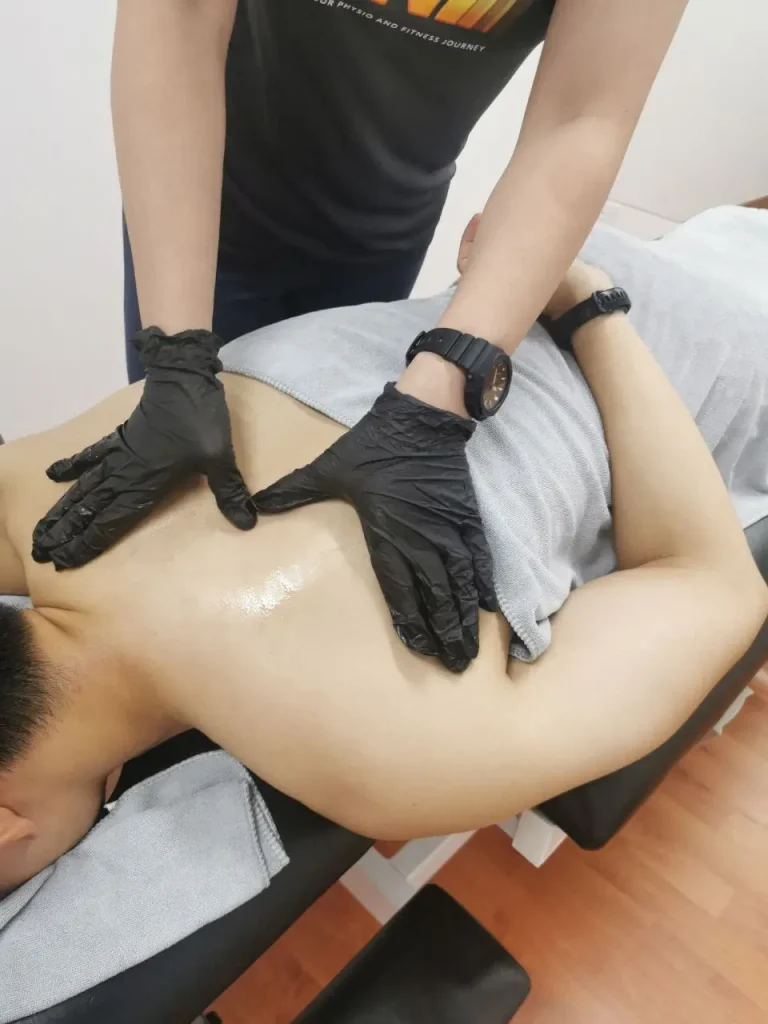
Your muscles are probably compensating for your frozen shoulder, creating tension and trigger points. We release these tight areas to improve overall shoulder function.
Holistic Approach: Beyond Passive Treatment
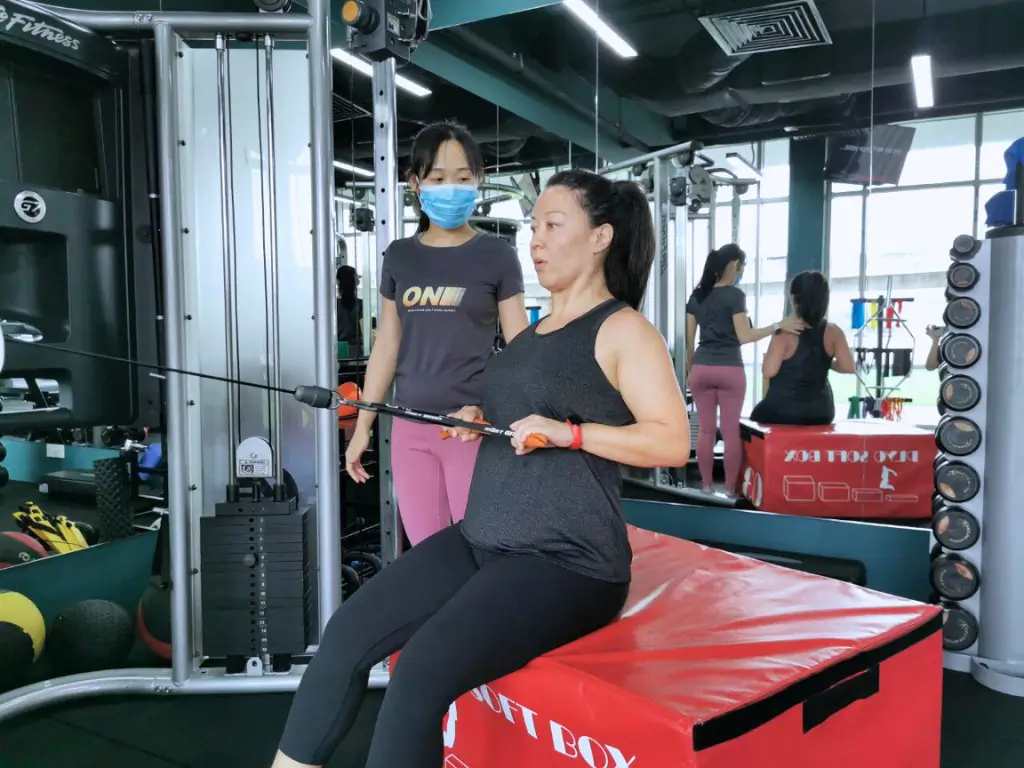
Here’s what sets us apart: we don’t just do things to you. We teach you to help yourself.
Yes, hands-on treatment is important. But what you do at home matters even more. That’s why we emphasize active exercise therapy alongside manual techniques.
Our philosophy includes:
- Teaching you why your shoulder hurts and what’s happening
- Guiding you shoulder exercises technique
- Giving you exercises you can do at home
- Addressing the lifestyle factors that contributed to your frozen shoulder
- Looking at your whole body, not just your shoulder (your posture, your desk setup, your stress levels)
We’ve found that patients who understand their condition and actively participate in treatment recover faster and more completely.
Your Frozen Shoulder Treatment and Recovery Timeline
Let’s be realistic about what recovery looks like. This isn’t a quick fix, but with proper physiotherapy treatment, you can absolutely get better.
Week 1-4: Assessment & Pain Management Phase
What happens:
- Comprehensive evaluation of your shoulder
- Clear explanation of your condition and what to expect
- Strategies to manage your pain right now
- Beginning gentle mobility work
Your role:
- Come to your scheduled appointments
- Start your home program (yes, even if it’s just pendulum swings)
- Make the lifestyle changes we recommend
- Be patient (we know it’s hard)
Month 2-6: Active Mobilization Phase
What happens:
- Progressive stretching protocols that evolve as you improve
- Hands-on capsular release techniques
- Gradual improvement in your range of motion
- Introduction to functional exercises
Your role:
- Consistent home exercises (this is where many patients slack off, don’t be one of them)
- Tracking your progress (take photos, measure your reach)
- Communicating with us about what’s working and what’s not
- Staying positive (we know it’s tough when progress feels slow)
Month 6-12: Strengthening & Functional Restoration
What happens:
- Focus shifts from stretching to strengthening
- Building up your rotator cuff muscles
- Improving scapular stability (your shoulder blade position)
- Return to work-specific or sport-specific activities
Your role:
- Embracing the strengthening work (it’s not as glamorous as stretching but it’s crucial)
- Gradually returning to activities you’ve been avoiding
- Not rushing back to heavy lifting or overhead sports too soon
- Understanding that strengthening is what keeps frozen shoulder from returning
Month 12-18+: Maintenance & Prevention
What happens:
- Advanced strengthening for long-term shoulder health
- Injury prevention strategies
- Developing a long-term exercise program you can maintain
- Final tweaks to get you back to 100% (or as close as possible)
Your role:
- Continuing exercises even after formal physiotherapy ends
- Maintaining good posture and movement habits
- Coming back for check-ups if needed
- Helping others who are going through what you went through (seriously, your experience matters)
Working with a Frozen Shoulder Physiotherapist
Not all physiotherapists are the same. Here’s what to look for when choosing someone to help with your frozen shoulder.
Specialized knowledge: Your physiotherapist should understand the stages of frozen shoulder, the evidence-based treatments, and how to modify treatment as you progress. They should be able to explain what’s happening in terms you understand.
What to expect during sessions: Typically, sessions involve hands-on treatment followed by exercises. Your physiotherapist will show you exercises, watch you do them, correct your form, and give you homework.
Frequency of treatment: Initially, you might come 2-3 times per week. As you improve, this typically reduces to once a week, then every 2 weeks, then monthly check-ins.
The importance of compliance: Here’s the truth: your physiotherapist can only help you if you do your part. The patients who do their home exercises consistently get better faster. The patients who only do exercises in the clinic struggle.
Communication matters: Tell your physiotherapist what’s working and what’s not. If an exercise causes sharp pain, speak up. If you can’t do your home program because of your schedule, let’s problem-solve together. We can’t help what we don’t know about.
At ONI Physio Fitness, we see ourselves as partners in your recovery, not just service providers. Your success is our success.
Home Care Tips for Frozen Shoulder Management
Beyond exercises, there are many things you can do at home to manage your frozen shoulder better.
Sleep positioning: This is huge. Many patients tell us sleep is the worst part. Try these:
- Sleep on your unaffected side or on your back
- Place a pillow under your affected arm to support it
- Try a body pillow to prevent rolling onto your bad shoulder
- Use extra pillows to find a comfortable position (experiment until something works)
Ergonomic workspace setup for KL office workers: Since you’re probably spending 8+ hours at a desk:
- Monitor at eye level (no looking down)
- Keyboard close enough that you don’t reach forward
- Chair height so your feet are flat on the floor
- Take breaks every 30 minutes to move your shoulders
- Consider a standing desk converter if possible
Daily stretching routine: Morning and evening, spend 10 minutes on gentle shoulder movements. Make it part of your routine like brushing your teeth. Set a phone reminder if needed.
Heat and ice protocol at home: Keep ice packs and a heating pad ready. Reference the stage-specific table above to know which to use when. For heat, a hot shower works wonderfully before exercise.
Activity modification: Be smart about daily tasks:
- Use your good arm when possible for heavy items
- Break tasks into smaller parts
- Ask for help when needed (not easy for independent people, we know)
- Modify how you do things (put items on lower shelves, use a reacher tool)
Stress management: Pain and stress feed each other. When you’re stressed, pain feels worse. When you’re in pain, stress increases. Break the cycle:
- Deep breathing exercises (5 minutes, twice daily)
- Short walks (great for your whole body)
- Activities that relax you (whatever works for you)
- Talking to someone about what you’re going through
Nutrition for joint health: While diet alone won’t cure frozen shoulder, good nutrition supports healing:
- Anti-inflammatory foods (fish, leafy greens, berries, nuts)
- Adequate protein for tissue repair
- Stay hydrated (yes, it matters for joint health)
- Limit inflammatory foods (excess sugar, processed foods)
Frozen Shoulder FAQs
Let’s tackle the questions we hear most often at our Mont Kiara center.

"I'm frustrated with slow progress. Is this normal?"
Yes. Absolutely yes. Frozen shoulder is frustrating because progress is slow and not always linear. You’ll have good weeks and setback weeks. This is completely normal.
Here’s what helps: focus on small wins. Can you reach a little higher today than last month? Can you sleep better? Can you put on your jacket a bit easier? These matter.
Progress in frozen shoulder is measured in months, not days. We know that’s hard to accept in our instant-gratification world, but it’s reality. Patients who accept this and stay consistent do better than those who get frustrated and give up.
Remember: you are improving, even when it doesn’t feel like it. The fact that you’re not getting worse is progress.
"I'm afraid of cortisone injections. Do I really need them?"
Short answer: probably not, at least not right away.
We always try physiotherapy first. Many patients improve significantly without ever needing an injection. The hands-on treatment, exercises, and time often do the job.
That said, injections aren’t the enemy. If you’re in severe pain during the freezing stage and it’s preventing you from sleeping or doing physiotherapy effectively, an injection might help. It can calm down the inflammation enough that we can work on your shoulder properly.
But it’s not an either/or situation. If you do need an injection, you still need physiotherapy. The injection helps with pain and inflammation. Physiotherapy actually restores your function.
We’ll be honest with you about whether we think an injection would help. And we’ll respect your decision either way.
"Can I speed up frozen shoulder recovery?"
Not really, but you can optimize it. Here’s what helps:
- Consistent home exercises (non-negotiable)
- Regular physiotherapy sessions
- Good sleep and stress management
- Staying active overall (walk, move, don’t become sedentary)
- Following stage-appropriate guidelines
Here’s what doesn’t help:
- Forcing your shoulder to move when it’s not ready
- Skipping exercises and then doing a marathon session
- Trying random treatments without professional guidance
- Comparing your timeline to someone else’s
Your shoulder will thaw when it’s ready. Our job is to guide it, support it, and make sure it heals properly. Trying to rush usually backfires.
"Will frozen shoulder come back?"
The good news: frozen shoulder rarely affects the same shoulder twice. It’s uncommon for it to return to your affected shoulder.
The less good news: about 20% of people who get frozen shoulder in one shoulder eventually get it in the other shoulder. Usually years later, not immediately.
Prevention strategies help:
- Keep moving your shoulders regularly
- Maintain good posture
- Don’t ignore shoulder pain (address it early)
- Keep up with strengthening exercises long-term
- Manage underlying health conditions like diabetes
This is why we emphasize strengthening so much in the later stages. Strong, healthy shoulders are less likely to develop problems. The exercises we teach you aren’t just for now. They’re for life.
Why Choose ONI Physio Fitness for Frozen Shoulder Treatment in Kuala Lumpur
We understand that you have options for physiotherapy in KL. Here’s what makes ONI Physio Fitness different.
Specialized expertise in shoulder conditions:
Frozen shoulder is complex. It requires specific knowledge and treatment approaches. Our physiotherapists have extensive experience treating frozen shoulder specifically. We’ve seen many cases and we know what works.
Evidence-based, individualized treatment plans:
We follow the research, but we don’t treat you like a textbook case. Your treatment plan is based on proven methods but adapted to you: your stage, your pain level, your goals, your life.
Comprehensive approach:
We don’t just push, pull, and send you home. We combine hands-on manual therapy with active exercise therapy, patient education, and lifestyle guidance. Frozen shoulder requires a holistic approach, and that’s what we provide.
Convenient Mont Kiara location:
Easy to reach whether you’re coming from central KL, Bangsar, Damansara, or anywhere in the Klang Valley. We know you’re busy and in pain. We don’t want travel to be another obstacle.
Commitment to patient education:
Knowledge is power. We want you to understand what’s happening in your shoulder, why we’re doing specific treatments, and how you can help yourself. Informed patients recover better.
Focus on long-term results:
Anyone can make your shoulder feel better for an hour with manual therapy. We want your shoulder to function well for years. That’s why we emphasize strengthening and proper movement patterns, not just short-term pain relief.
Patient-centered care:
You’re not a number or a condition. You’re a person dealing with a painful, frustrating problem. We treat you with empathy, respect, and genuine care. Your concerns matter. Your goals matter. You matter.
We’ve helped countless patients in Mont Kiara and across Kuala Lumpur recover from frozen shoulder. Some came to us in the early freezing stage. Others came after suffering for over a year. Wherever you are in your journey, we can help.
See what our clients feedback us after their frozen shoulder physiotherapy at ONI Physio Fitness:
I came to ONI for frozen shoulder. Eva did an extraordinary job to solve my issue in 2-3 months . Quite short for frozen shoulder. Then I also used her services for back pain with same extraordinary experience in solving the problem. I can only recommend Eva to anyone.
Eva helped tremendously with my frozen shoulder and tight hip flexors. Now to keep it up with the homework!
Take the First Step Toward Frozen Shoulder Recovery
Frozen shoulder is frustrating, painful, and it messes with your daily life. But it’s not permanent, and you don’t have to suffer through it alone.
The sooner you start proper treatment, the better your outcome. Early intervention can potentially shorten your overall recovery time and definitely makes the journey more manageable.
At ONI Physio Fitness, we combine expert physiotherapy with genuine care. We understand what you’re going through because we’ve helped so many others through the same challenge. We know the frustration, the sleep disruption, the impact on work and family life.
Your shoulder can get better. With proper guidance, consistent effort, and patience, you will recover. The exercises work. The manual therapy works. The strengthening works. It takes time, but it works.
You deserve to lift your arm without pain. You deserve to sleep through the night. You deserve to get dressed without struggling. You deserve to drive your car, work at your desk, and live your life without constant shoulder pain.
Ready to start your recovery?
Book an assessment at ONI Physio Fitness today. Let’s create a personalized treatment plan that gets you back to the activities you love. Our center in Mont Kiara, Kuala Lumpur is ready to help you take the first step toward a pain-free, mobile shoulder.
Don’t let frozen shoulder control your life any longer. WhatsApp us to schedule your appointment. Your future self will thank you for taking action today.

